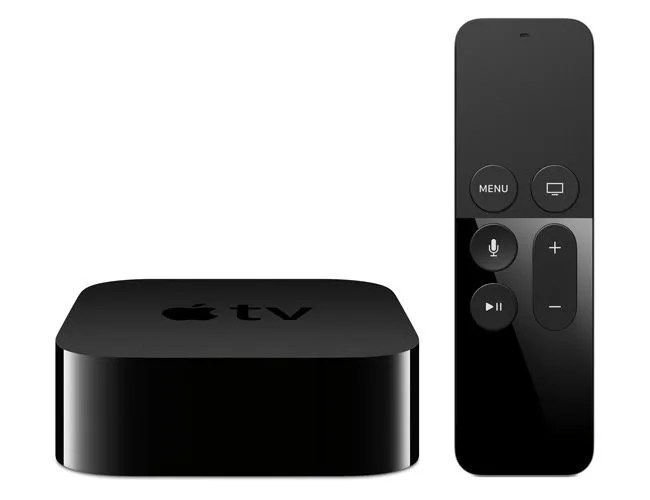Rumors have swirled for the better part of a decade surrounding Apple’s intention to redefine television. First came the Apple HDTV — the notion that Apple would be building an actual, physical monitor to rival Vizio, Samsung and LG — and then came the expectation that it would forge deals with content providers to finally put pay-TV programming into an Internet-only package. Neither has happened. It’s entirely likely that Apple has disregarded the first point (have you seen TV margins lately?), but the second hope is probably alive. Sadly, revolutionizing television will have to wait for a future event, as the new Apple TV doesn’t offer anything akin to Sling TV. What it does offer, however, is a new (higher) price: $149 for the 32GB model and $199 for the 64 bigger.
The Good News
Revamped Remote
Apple’s current Apple TV remote is spartan, yet functional. The new one is totally laudable. There’s a svelte trackpad up top that allows you to gesture around its interface and utilize scrub bars within shows, just as you would on an iPad or iPhone. It’s also far more robust, offering one-touch access to Siri (for asking your TV questions or searching for new stuff to watch) as well as doubling as a game controller.
Siri’s New Tricks
Siri hasn’t been the most useful of Apple products, routinely struggling to understand soft voices and requiring certain commands to be uttered in a very specific way. Siri on the Apple TV, however, is a horse of a different color. Apple’s onstage demo showcased a voice control system of the future — one where you can say something as natural as “Show me the Modern Family episode with Edward Norton,” and it’ll find that exact episode. Plus, it’ll search for material not just in iTunes, but on Hulu, Netflix, HBO and Showtime. Apple swears that even more content partners are coming soon, but we wouldn’t hold our breath for Amazon’s Prime Video library to be one of them.
Gamer’s Delight
The Apple TV won’t replace the Xbox One or PlayStation 4 anytime soon for hardcore gamers, but Apple TV could be the console for the masses. Casual gamers — otherwise known as real humans with hectic jobs, kids running everywhere and barely enough time to eat a proper meal — far outnumber dedicated “gamers.” For perspective, it has taken Sony nearly two full years to sell 25 million PS4 consoles. In 2014 alone, Apple moved over 130 million new iOS products, most of which cost more than the PlayStation 4. We expect iOS developers to pour loads of resources into crafting awesome casual games for Apple TV, which should be far more approachable (and affordable) than your average dose of Halo.

The Bad News
